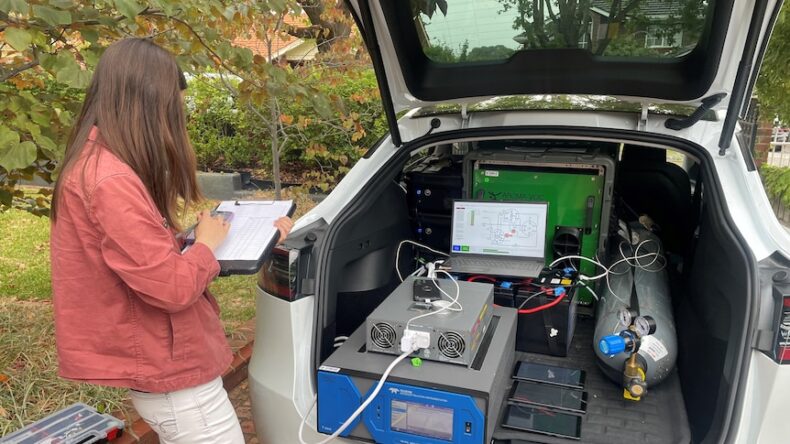By, Sangeetha Saravana
Table of Contents
Health hazards of a cooking gas stove: The impact of using a gas stove on human’s health and the quality of the air in a kitchen is being investigated by a Stanford University team in Australia.

(image source: ABC News/Leonie Thorne)
US researchers staying at Melbourne University as part of the Kitchen Pollutants Project measures the air quality and collect samples of gas from Australian kitchens. Their objective is to develop a better understanding of the substances that gas burners emit. The unventilated kitchen of the house, where a gas stove is turned on, is where they are keeping an eye on pollution levels.
Some of the the true facts revealed by the study:

(image source: The Washington Post)
One device displays the air’s concentration of nitrogen dioxide, a respiratory irritant associated to asthma, and it is rising quickly. The unventilated kitchen’s nitrogen dioxide concentration rose five times above the Australian outdoor air quality limit in just 30 minutes. Energy research specialist Eric Lebel reports that the concentration appears to have reached 495 parts per billion (ppb).
According to Dr. Lebel, the scientists are collecting samples inside Australian kitchens to determine the amount of air pollutants produced by gas burners. It’s a component of the recent Kitchen Pollutants Research, a venture between Australian university, The University of Melbourne and American nonprofit organisation PSE Healthy Energy. Many studies indicate that gas is not as clean as previously believed, he added. It’s unclean for the environment and unclean for ourr health,
Australia has guidelines for outdoor air quality but none for indoor air quality. The National Environment Protection Measure states that 80 ppb of NO2 is the maximum concentration threshold for an hour. An earlier study from Stanford University in the US discovered that gas stoves there might leak the greenhouse gas methane even when they were not turned on.
Not just kitchens but also the bedrooms, health hazards
When the gas burner was running, the researchers collected air quality samples in three distinct settings: the kitchen with windows and doors closed; the kitchen with opened doors; and the bedroom on the opposite side of the house. To minimise interference from other substances that are generated during meal preparation, those experiments were conducted while a large pot of water was boiling. When there was no ventilation in the kitchen during the first experiment, nitrogen dioxide levels peaked at just over 500 ppb.
When the kitchen doors were opened, nitrogen dioxide levels climbed to a peak of roughly 116ppb, which is still above the recommended range for outdoor air quality. Nitrogen dioxide concentrations peaked in the bedroom at little above 40 ppb. Only 11ppb and 7ppb of nitrogen dioxide were present in the kitchen and bedroom, respectively, at baseline levels before the gas burner was turned on. According to a Climate Council research published in 2021, gas cooking may have the same effect on children with asthma as passive smoking. Also Check: US renewable electricity surpassed coal
Alternative measures to combat the pollutants:

(image source: California Air Resources Board)
According to Brian Oliver, a respiratory diseases research leader at the University of Technology Sydney, long-term exposure to indoor air pollution brought on by burning gas could have “profound impacts” on some people’s health. Nonetheless, he noted that the risk was minimal with adequate ventilation. He advised to switch to an electric stove if they had a gas stove and an oven but there wasn’t enough ventilation. But, if the kitchen itself is a sizable space and there is a range hood that vents outdoors, he believe’s there will be a significant risk to our health. We all have to consider the risks associated with our actions, the dangers to which we are exposed, and the long-term effects on us.













